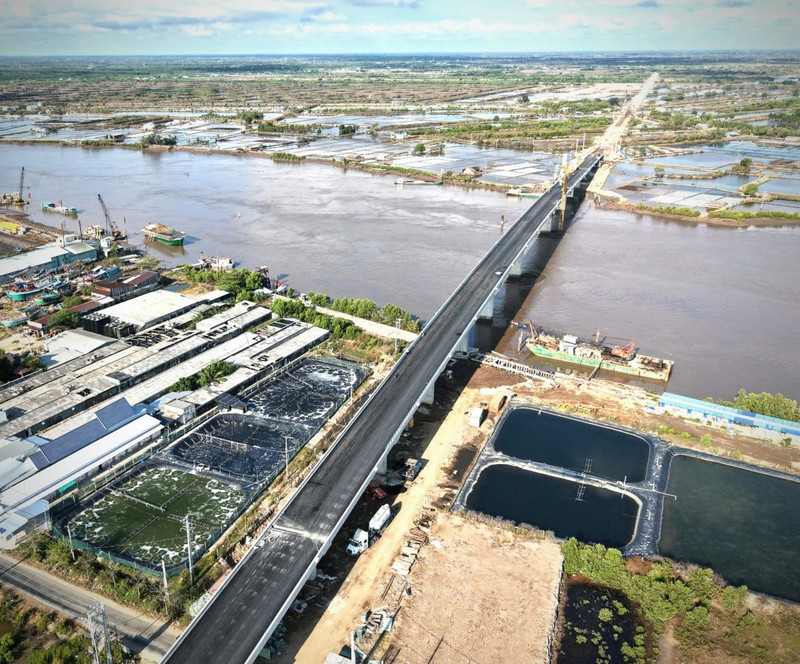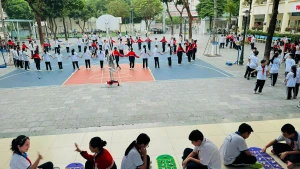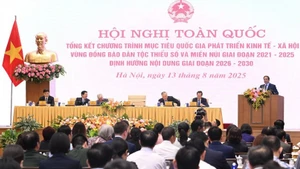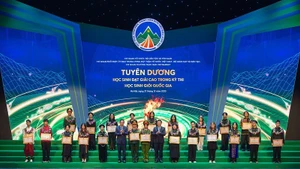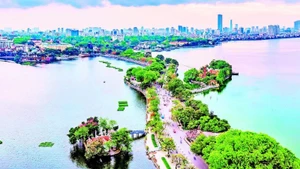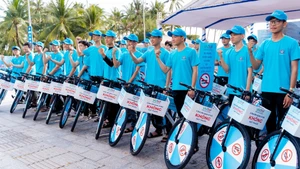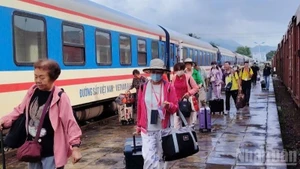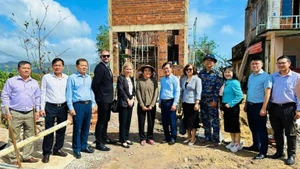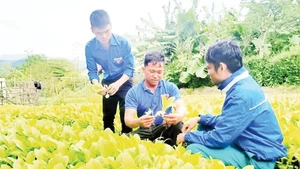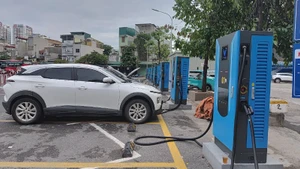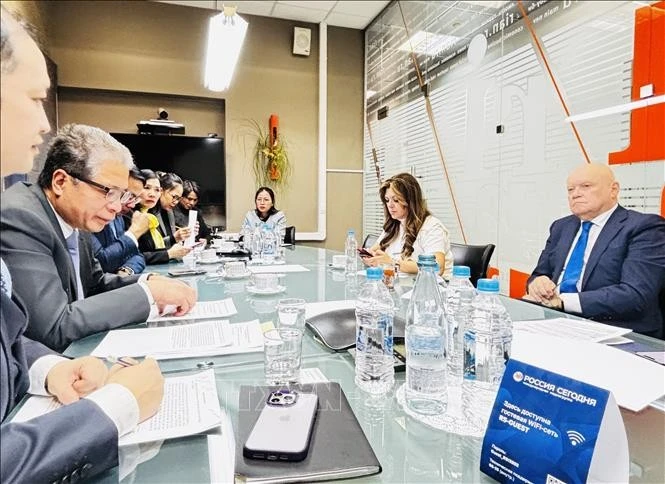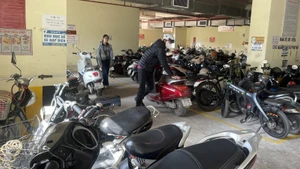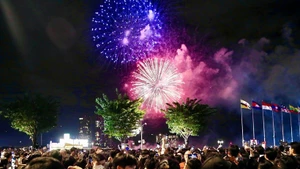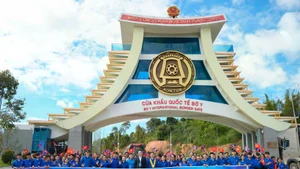Overcoming obstacles
Positioned at the heart of Southeast Asia’s maritime region, Ca Mau benefits from its strategic location along the southern economic development corridor, offering favourable conditions for trade with neighbouring countries. As the only Vietnamese province bordered by the sea on three sides, its coastline stretches over 250 kilometres.
Its low-lying terrain, abundant sunshine, and strong winds provide ideal conditions for renewable energy development, enabling electricity exports to Malaysia, Singapore, Indonesia, and beyond.
Inland, Ca Mau possesses diverse saline and freshwater ecosystems, the largest forest cover in the Mekong Delta, and abundant aquatic and marine resources.
These natural advantages position the province as a potential regional hub for seafood and food processing, while fostering eco-tourism, marine tourism, agricultural tourism, and community-based tourism.
However, despite its considerable potential, Ca Mau has long struggled with inadequate transport infrastructure, a primary bottleneck hindering its growth.
Ca Mau has huge potential to become a centre for seafood and food processing in the region and country, while developing eco-tourism, marine and island tourism, agricultural tourism, and community tourism.
Many of the province’s key exports face high logistics costs to reach Ho Chi Minh City due to the absence of a direct seaport. Air transport remains limited due to small airport capacities, while road networks are constrained by narrow routes and long distances.
Nguyen Anh Minh, Director of Quang Tien Construction Co., Ltd., emphasised that transport infrastructure is a fundamental factor influencing investment decisions in Ca Mau.
“For years, despite the province’s hospitality and incentives, major investors have hesitated to expand their business operations due to the high logistics costs and long distances from economic centres,” he observed.
Recognising these challenges, Ca Mau has mobilised both external and internal resources to enhance its transport connectivity.
The locality has invested trillions of VND into infrastructure projects such as the 44-kilometre East-West route, Song Doc Bridge at the Song Doc estuary in Tran Van Thoi district, and Ganh Hao Bridge in Tan Thuan commune, Dam Doi district.
Further efforts are underway to upgrade inter-district and inter-commune connecting roads and rural transport networks, aiming to link key coastal urban centres such as Song Doc, Khanh Hoi, and Cai Doi Vam.
A significant transformation is unfolding with five major projects now funded by central government agencies, including: the Can Tho–Ca Mau expressway, the Ca Mau–Dat Mui expressway, Hon Khoai port and its connecting transport routes, expansion and upgrading of Ca Mau airport, and improvements to National Highway 1 and the Ho Chi Minh Road.
According to Pham Thanh Ngai, Chairman of Ca Mau Provincial People’s Committee, these major projects will form the backbone of a comprehensive and modern transport system, spanning air, road, and sea routes.
“They will serve as a powerful catalyst for investment attraction and double-digit growth in the coming years,” he affirmed.
Realising the vision of becoming the “Southernmost Continent”
At a working session with the Standing Board of the Ca Mau Provincial Party Committee in November 2024, Party General Secretary To Lam urged the province to maximise its marine, island, and mangrove ecosystem advantages. He emphasised the importance of strategic planning and inter-provincial cooperation.
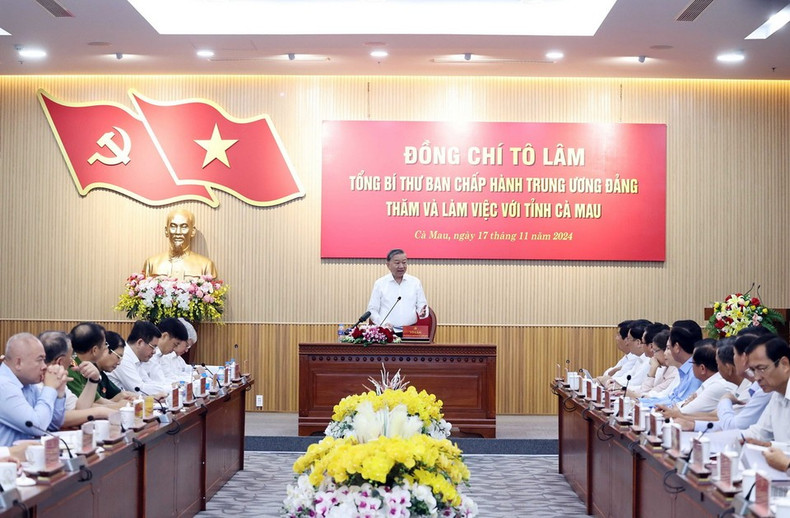
He advised Ca Mau to capitalise on its geo-economic position, while prioritising infrastructure, especially transport networks.
“The people and businesses must remain at the centre of development,” he said, calling for administrative reforms, digital transformation, and a comprehensive green transition across the public and private sectors.
The Party chief also highlighted the need for an improved business environment, enhanced provincial competitiveness, and greater investment in education and healthcare.
Nguyen Ho Hai, Secretary of Ca Mau Provincial Party Committee, outlined the province’s long-term vision of becoming the “Southernmost Continent” — a national marine economic centre and renewable energy export hub.
To achieve this, the provincial Party Committee has focused on two key priorities: integrating the Party General Secretary’s directives into official resolutions for the 2025–2030 term; and collaborating with governmental bodies to resolve socio-economic infrastructure bottlenecks.
Ca Mau has set a long-term vision of becoming the “Southernmost Continent” — a national marine economic centre and renewable energy export hub.
Hai reported that efforts to accelerate the Can Tho–Ca Mau expressway are progressing, with completion targeted before 31 December 2025, in accordance with the Prime Minister’s directive.
Similarly, construction of the Dat Mui expressway is scheduled to commence in August 2025, following recent approval.
The province has also been working closely with the Viet Nam Airports Corporation to expand and upgrade Ca Mau Airport.
In 2024, national leaders assessed investment in road and bridge projects linking Hon Khoai island, supporting plans for a dual-use seaport. Improvements to National Highway 1 (from Ca Mau city to Nam Can) and the Ho Chi Minh Road (from Nam Can to Dat Mui) are scheduled for implementation in the 2025–2030 period.
Hai stressed the importance of flexible land and forest policies to attract investment in riverbank and coastal erosion control.
“This would unlock greater land resources for renewable energy projects, fishing port development, tourism, and service infrastructure, creating a seamless socio-economic development chain across Ca Mau’s coastal areas,” he explained.
